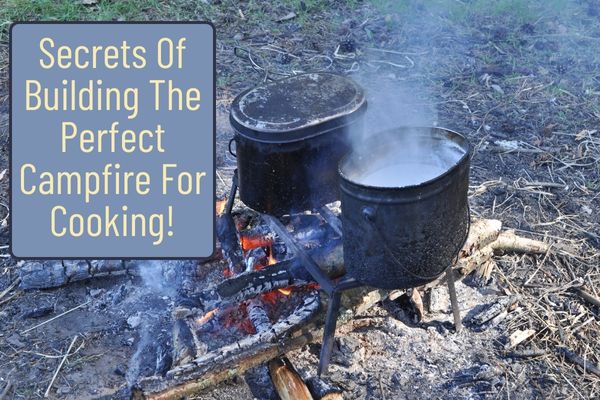Home defense isn’t just something to employ when things go south. It’s something we must do preemptively.
It doesn’t take a nuclear winter, or even a hurricane, to draw desperate people to your home in search of valuable resources.
Whether you live in a region blessed with good property crime management or not, during an emergency event, it might not make much of a difference where you live. You’ll need to prepare.
Yet, in preparing for disaster, we often tend to think about the big-budget stuff first. Guns, expensive home security and surveillance systems.
But what about the basics? After all, what’s a state-of-the-art security system worth with a faulty deadbolt? So, let’s explore some simple ways you can make your home a fortress without breaking the bank.
Before we even speak of deadbolts, how strong is your door? Below is a rundown of different kinds of doors and their durability against intruders.
Steel
:: Pros: Extremely strong, difficult to kick in, often comes with reinforced frame.
:: Cons: Can dent and may require maintenance to prevent rust if not galvanized.
:: Best for: Front and back entrances.
Solid-Core Wood
:: Pros: Heavy and strong, good insulation, aesthetically pleasing.
:: Cons: Can be expensive and prone to warping or rot if not sealed properly.
:: Best for: Front entry with style and security.
Fiberglass
:: Pros: Strong, weather-resistant, low maintenance, can mimic wood appearance.
:: Cons: Not as strong as steel but better than hollow-core doors.
:: Best for: Front doors, especially in harsh climates.
Security Screen
:: Pros: Extra protection, made of steel or aluminum mesh, allows ventilation.
:: Cons: Can be expensive; some models are decorative but not highly secure.
:: Best for: Front and back doors in warm climates.
But what good is a door if it’s unsecured? Let’s look at good deadbolts for more family security:
ANSI/BHMA Grade 1: Highest rating for residential deadbolts (Grade 2 is acceptable but not top tier).
1-inch Throw Bolt: Any deadbolt you choose should fully extend 1 inch into the door frame.
Drill and Pick Resistance: Hardened steel inserts, rotating pins, or ball bearings.
Reinforced Strike Plate: At least 3-inch screws into the wall stud, not just the trim.
Key Control: Prevents unauthorized key copies (found in Medeco, Mul-T-Lock, etc.)
Smart Features (optional): Remote access, alerts, and auto-lock can add convenience.
WINDOWS: Windows should have secure locks. And, to play it safe, ground level windows should have security film, or bars.
MOTION-ACTIVATED LIGHTING AND ALARM SYSTEMS:
Though often dismissed as optics, motion activated lighting is proven to reduce home invasions by 39%.
Next, let’s begin to look at what security systems can do for your family’s safety. Modern alarm systems include door and window sensors, motion detectors, and smartphone integration for remote monitoring.
Though some features of home security systems are designed to take would-be intruders by surprise, signs aren’t one of them. From “No Trespassing” to signs announcing the deployment of specific security companies serving the property, all of these can serve as deterrents.
Home security is often about developing habits like checking locks before bed, being aware of the comings and goings around your property and trusting your gut when a situation seems unusual.
One sometimes overlooked aspect of home security is your neighbors.
Maintaining a good relationship with the neighbors is a surefire way to ensure that your house has an extra pair of eyes. Cooperating with neighbors and incorporating the ideas of strength in numbers is a surefire way to increase your security.
Start with establishing good lines of communication with your family. Plus, develop plans for hasty exits should a dangerous situation occur.
Professional Consultation: Consider having a security assessment done by local law enforcement or a security professional who can identify specific vulnerabilities in your home and neighborhood. Good security is a calculated and layered system that helps ensure your family’s safety inside and out.
Now, let’s put the pieces together.
Think of home defense like an onion: multiple layers that delay, deter, and detect threats.
- PERIMETER LAYER:
Fencing: Privacy or chain-link with locked gates.
Landscaping: Thorny bushes under windows, clear sightlines to remove hiding spots.
Dogs: A barking dog is one of the best deterrents.
Motion-Activated Lighting: Solar or electric, covering all blind spots.
Warning Signs: “Beware of Dog,” “24/7 Surveillance,” etc.—even if you don’t have a dog or camera.
2. ENTRY-POINT SAFETY:
Doors:
:: Strong door. Option: Reinforced frames and deadbolts
:: Door jammers or security bars
:: Peepholes or doorbell cameras
Windows:
:: Reinforced window glass, security film, or bars
:: Locks and dowels on sliders
:: Motion-sensor alarms
Garage:
:: Disable automatic opener in emergencies
:: Manual locks or bolts
3. INTERIOR DEFENSE
What’s in the safe room? Also known as a “hardened room” or a “panic room,” safe rooms boast reinforced doors, stored supplies, communications, and possibly – weapons. Alarm systems flank each entrance. Within the safe room, battery powered / solar cameras that record locally (offline systems preferred in grid-down situations) can bolster the system’s black box.
Access control of your home is important. Lock all doors and windows, even when you’re home. Avoid hiding keys outside. Consider digital keypad locks for enhanced safety. Teach your children not to open doors to strangers. Neighborhood awareness: create an environment where there is communication and transparency about who belongs, and who doesn’t.
4. ARMED DEFENSE:
Below are some popular gun options for preppers. The shotgun is good for close quarters, with devastating effects on intruders. Handguns are maneuverable, and easy to store in safe rooms.
The AR-15 is for rural properties or defense from a distance. Securing all firearms when not in use is key to maintaining safety in your home. Family firearm training should be mandatory. It’s also vital to know your local laws.
If your state has stricter gun laws, below is a list of improvised weapons that can be used in lieu of guns:
Baseball bats, wasp spray, blades, and flashlights can all be used in close quarters against an attacker. In using any of these tools, it’s important to adopt the mindset to “Avoid conflict, but if it comes, be decisive.”
5. Training & Drills
It’s vital to take the necessary time to prepare to use these tools of self-defense. Also, families should be on the same page about the following:
:: What to do if someone breaks in.
:: Rally points. Safe rooms or designated corners.
:: Who calls 911, who gathers the siblings, who secures the door.
In addition, practice scenarios including:
:: Nighttime intruders,
:: Power outages
:: Daytime intruders.
Finally, below is an essential gear checklist:
| Item | Use |
| >> Door reinforcement kit (e.g., Door Devil) | Prevents kick-ins |
| >> Motion lights | Deters prowlers |
| >> Solar or UPS-powered cameras | Surveillance |
| >> Firearm + safe | Armed defense |
| >> Security film / window locks | Prevent entry |
| >> Tactical flashlight | Blinding/distraction/weapon |
| First aid kit / trauma supplies | Post-incident care |
| Safe room preps (food, comms, meds) | Last-resort defense |
Lastly, training in unarmed and armed martial arts could be extremely helpful for most home defense situations. Karate, kung fu, Brazilian Jujutsu, or Filipino Martial Arts could give you added confidence in a home defense situation.




